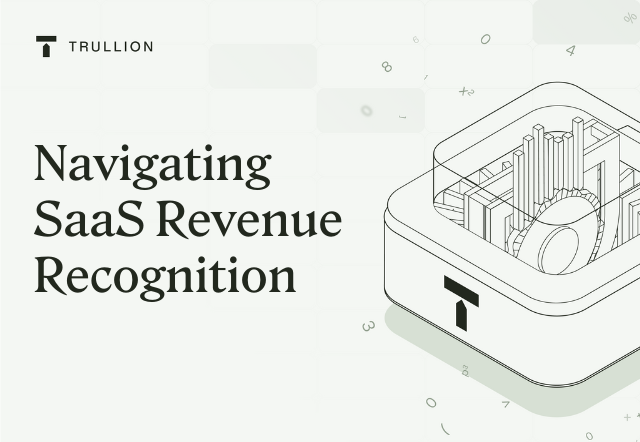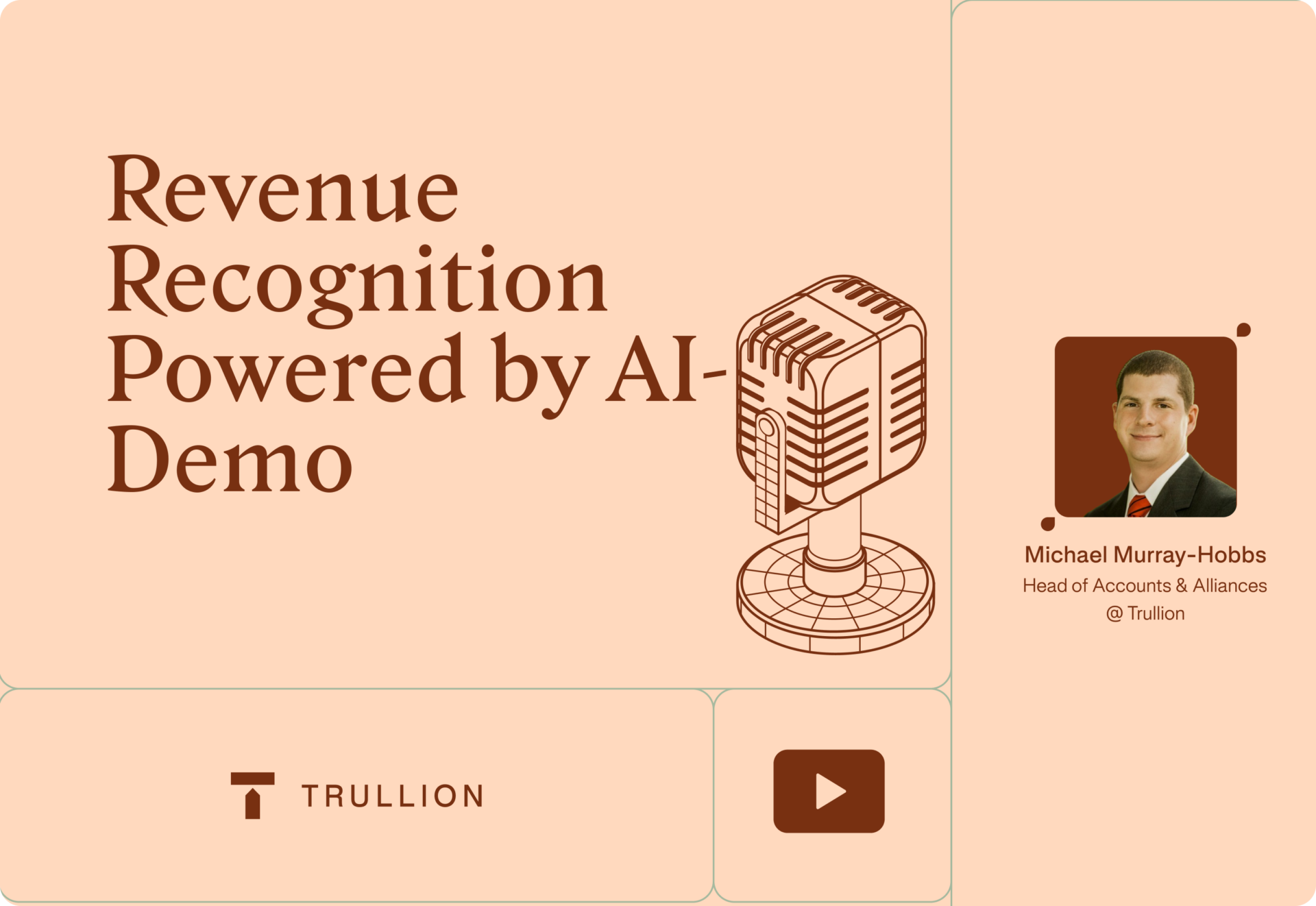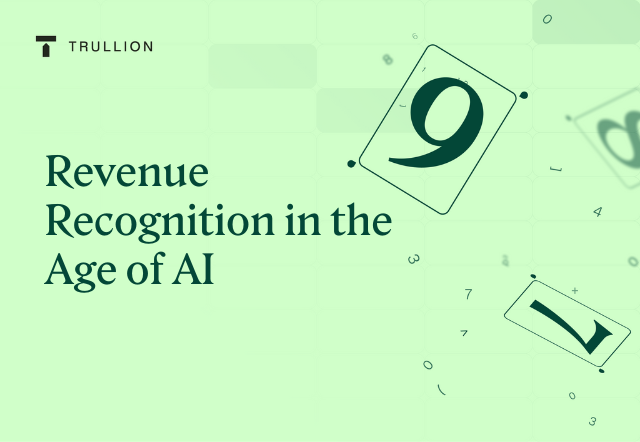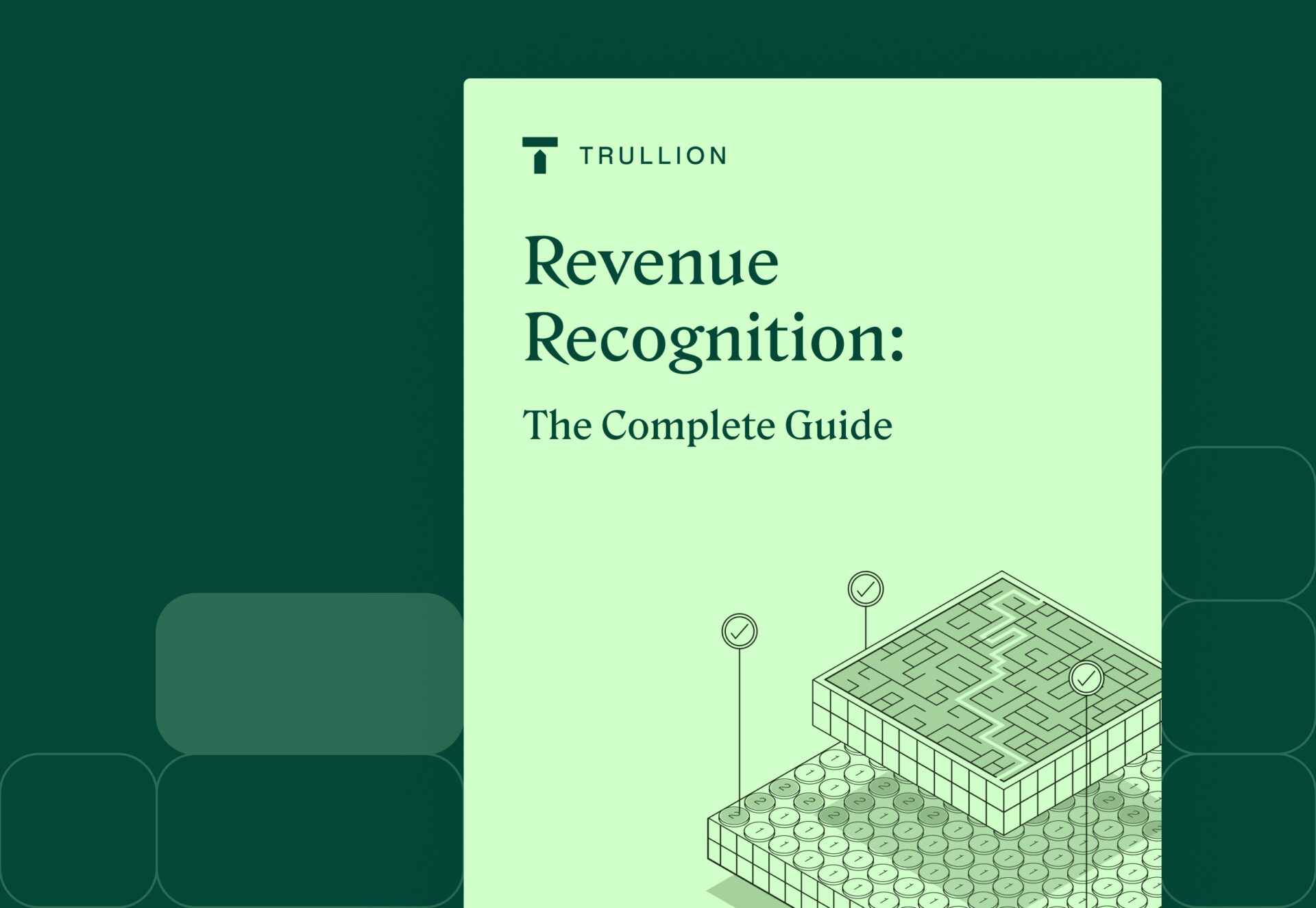Introduction
Software as a Service (SaaS) has revolutionized software delivery, shifting from one-time purchases to a subscription-based model and reshaping revenue recognition for finance professionals
SaaS revenue models often feature complex pricing structures, including recurring subscriptions, usage-based fees, and various levels of service, which create unique challenges for financial analysis and reporting.
Mastering the principles of revenue recognition is crucial for accurate and compliant financial reporting. This understanding not only ensures adherence to local and international financial regulations, but also provides clearer insights into the company’s financial health, enabling better strategic decisions and empowering finance professionals to add more value to their organization.
Understanding Revenue Recognition in SaaS Companies
Precise revenue recognition helps in forecasting future revenue streams and in maintaining compliance with financial regulations, while avoiding legal and financial consequences.
Complexities of SaaS Revenue Models
SaaS revenue models are inherently complex, primarily due to their diverse structures:
- Subscription-Based Models: The most common model, where customers pay a recurring fee for access to a software. Challenges here include handling varying contract lengths, renewals, upgrades, or downgrades in subscription levels.
- Usage-Based Models: Pricing based on the extent of service usage. This model adds complexity in tracking and accurately billing the usage, and in recognizing revenue proportionate to the consumed service.
- Hybrid Models: Combining both subscription and usage-based aspects, which further complicates revenue recognition as it involves multiple performance obligations.
Each model demands attention and reporting to align revenue recognition with the actual delivery of services.
Impact of ASC 606 / IFRS 15 on SaaS Revenue Recognition
ASC 606 and IFRS 15 significantly influence how SaaS companies recognize revenue.
The standards’ emphasis on the transfer of control as a basis for revenue recognition requires SaaS companies to carefully evaluate their revenue contracts and recognize revenue in a manner that reflects the transfer of services to customers.
Saas Revenue Recognition Under ASC 606 & IFRS 15
The core principles of revenue recognition focus on the accurate and timely reporting of revenue in financial statements. These principles include:
- Identification: Recognizing revenue involves identifying when a company has entered into a binding agreement with a customer that creates enforceable rights and obligations.
- Measurement: Determining the amount of revenue to be recognized. This includes measuring the amount that reflects the consideration to which the company expects to be entitled in exchange for transferring goods or services.
- Allocation: When a contract includes multiple goods or services, the transaction price must be allocated to each distinct performance obligation.
- Timing: Revenue is recognized when (or as) the company satisfies a performance obligation by transferring a promised good or service to the customer, which is when the customer obtains control of that good or service.
- Presentation and Disclosure: Ensuring that revenue-related information is presented clearly in financial statements and disclosures are made regarding the nature, amount, timing, and uncertainty of revenue and cash flows arising from contracts with customers.
ASC 606 and Its Five-Step Model
ASC 606 provides a structured five-step model for revenue recognition, particularly relevant for SaaS companies:
- Identify the Contract with a Customer: This involves determining whether an agreement with a customer meets the criteria to be accounted for as a contract under ASC 606.
- Identify the Performance Obligations in the Contract: A performance obligation is a promise in a contract to transfer a distinct good or service to the customer. In SaaS, this could include software access, updates, and support.
- Determine the Transaction Price: This is the amount of consideration a company expects to be entitled to in exchange for transferring the promised goods or services. It includes fixed amounts variable considerations, and may consider the time value of money if there is a significant financing component.
- Allocate the Transaction Price to the Performance Obligations in the Contract: The transaction price is allocated to each distinct performance obligation based on the relative standalone selling prices of each good or service in the contract.
- Recognize Revenue When (or As) the Entity Satisfies a Performance Obligation: For SaaS companies, revenue is typically recognized over time as the service is provided, reflecting the ongoing access and service provided to the customer.
Under ASC 606 revenue recognition SaaS companies must carefully evaluate their customer contracts and apply these steps to recognize revenue in a way that accurately reflects the economic realities of their service delivery.
SaaS-Specific Revenue Recognition Scenarios
SaaS companies encounter a variety of revenue recognition scenarios, each with its own nuances. Here’s a breakdown of how revenue recognition works in different SaaS scenarios:
1. Monthly Subscriptions
- Scenario: Customers pay a monthly fee for software access.
- Revenue Recognition: Revenue is recognized monthly as the service is provided. For instance, if a customer pays $120 for a year-long subscription, $10 is recognized each month.
- Example: A cloud storage company charges customers monthly. As customers receive and use the storage service throughout the month, the company recognizes the monthly fee as revenue over that period.
2. Multi-Year Contracts
- Scenario: Customers enter into contracts lasting several years, often at a discounted rate.
- Revenue Recognition: Revenue is recognized over the life of the contract. If a customer pays upfront, the revenue is deferred and recognized proportionally over the contract period.
- Example: A CRM software provider signs a 3-year contract for $36,000. Even if paid upfront, the provider recognizes $1,000 per month as revenue, spreading the total over 36 months.
3. Freemium Models
- Scenario: Basic services are offered for free, with premium features available for a fee.
- Revenue Recognition: No revenue is recognized for the free component. Revenue from premium features is recognized as they are provided.
- Example: A project management tool offers free basic features, but charges for advanced analytics. Revenue is recognized as users subscribe and use these premium features.
4. Usage-Based Pricing
- Scenario: Charges based on the level of usage (e.g., per transaction, per data unit).
- Revenue Recognition: Revenue is recognized as the usage occurs.
- Example: A cloud service charges per gigabyte of data stored. Revenue is recognized based on the amount of data stored by customers each month.
5. Upfront Fees (Non-refundable Initiation or Set-up Fees)
- Scenario: One-time fees for set-up or initiation.
- Revenue Recognition: Depending on the nature of the fee, it may be recognized immediately if it relates to a separate performance obligation, or deferred and recognized over the subscription period.
- Example: A SaaS company charges an initial set-up fee. If this fee is for set-up services, it’s recognized when the service is performed. If it’s an advance payment for future services, it’s recognized over the contract period.
6. Sales with Right of Return or Refunds
- Scenario: Customers have the right to cancel subscriptions and receive refunds.
- Revenue Recognition: Revenue is recognized net of an estimate of such returns or refunds.
- Example: An email marketing tool offers a 30-day money-back guarantee. The company recognizes revenue minus an estimated refund rate based on historical data.
7. Contract Modifications and Renewals
- Scenario: Changes to existing contracts, such as upgrades or extensions.
- Revenue Recognition: Depends on whether the modification creates a new contract or is part of the existing contract.
- Example: If a customer upgrades their subscription, and the upgrade is considered a new contract, the company recognizes additional revenue based on the new contract terms.
In each scenario, SaaS companies must carefully evaluate the specific circumstances of their customer contracts and apply ASC 606 principles to recognize revenue accurately and comply with accounting standards.
Challenges and Compliance
Common challenges in SaaS revenue recognition include:
- Complex Contract Terms: SaaS agreements often have multi-faceted terms, including tiered pricing, discounts, and add-ons, making revenue allocation and recognition complex.
- Variable Pricing Models: Usage-based and tiered pricing models introduce variability, requiring meticulous tracking and accurate revenue allocation as per usage.
- Performance Obligations: Identifying and separating performance obligations in a contract, especially in bundled offers where software, support, and updates are sold together, can be challenging.
- Deferred Revenue: Managing deferred revenue, especially for prepaid subscriptions or long-term contracts, demands precise calculation and systematic revenue recognition over the contract period.
- Customer Churn and Contract Modifications: Frequent changes like upgrades, downgrades, or cancellations complicate the revenue recognition process, requiring adjustments in the revenue allocation and recognition patterns.
Compliance Issues and Consequences of Improper Revenue Recognition
- Non-Compliance with ASC 606/IFRS 15: Failure to comply with these standards can result in financial statements that do not accurately represent a company’s financial position, potentially misleading investors and stakeholders. This can result in restatements and other significant consequences.
- Regulatory Scrutiny and Penalties: Improper revenue recognition can attract regulatory scrutiny, leading to penalties, fines, and legal actions. It undermines the trust and credibility of the company in the market.
- Audit Challenges: Inaccuracies in revenue recognition can lead to complications during audits, resulting in additional time, resources, and potential restatements of financial statements – or even a qualified audit opinion.
- Impact on Business Decisions: Inaccurate revenue data can lead to flawed business strategies and decisions, as well as misaligned forecasts and budgets.
- Investor Relations and Market Perception: The market and investors rely heavily on financial statements for decision-making. Erroneous revenue recognition can adversely affect a company’s stock price and investor confidence.
To mitigate these challenges and comply with regulatory standards, SaaS companies should invest in modern accounting tools that are equipped to handle today’s SaaS revenue recognition challenges.
Impact on Financial Statements
Revenue recognition significantly influences three key financial statements: the income statement, balance sheet, and cash flow statement.
- Income Statement: Revenue is a critical component of the income statement, directly affecting the reported profitability. For SaaS businesses, revenue recognition determines the timing and amount of revenue reported in each period. For example, if a SaaS company receives an annual subscription fee upfront, it can only recognize a portion of this revenue each month, reflecting the service provided during that period.
- Balance Sheet: Unearned or deferred revenue, a liability, appears on the balance sheet. This represents the obligation to deliver services in the future. As services are rendered, this liability decreases, and revenue increases. For instance, if a SaaS company receives $12,000 for a yearly subscription, initially, the entire amount is recorded as deferred revenue (a liability), and gradually recognized as revenue, reducing the liability proportionately each month.
- Cash Flow Statement: Revenue recognition affects the cash flow statement in the operating activities section. While cash received from customers is reflected here, the timing of revenue recognition can differ from cash flows. For example, if a customer pays $12,000 upfront for a year, the cash flow statement shows a $12,000 inflow at the payment time. However, the income statement reflects this amount incrementally over the year.
Examples of Financial Statement Entries for SaaS Revenue
Upon Receipt of Subscription Fee:
- Debit: Cash/Bank (Asset)
- Credit: Deferred Revenue (Liability)
Monthly Revenue Recognition:
- Debit: Deferred Revenue (Liability)
- Credit: Revenue (Income Statement)
In Case of Usage-Based Revenue (e.g., billed monthly based on usage):
- Debit: Accounts Receivable (Asset)
- Credit: Revenue (Income Statement)
Upon Payment:
- Debit: Cash/Bank (Asset)
- Credit: Accounts Receivable (Asset)
For Upfront Non-refundable Fees (e.g., setup fees):
- Debit: Cash/Bank (Asset)
- Credit: Unearned Revenue (Liability)
Recognized Over Time:
- Debit: Unearned Revenue (Liability)
- Credit: Revenue (Income Statement)
These entries show how revenue is recorded and recognized in SaaS business models, illustrating the interplay between cash flow timing and the accrual basis of accounting. It’s vital for SaaS companies to accurately track and record these transactions to ensure the reliability of their financial statements.
Saas Revenue Recognition Software and Tools
For SaaS revenue recognition, the role of automation and specialized software and tools is critical in reducing errors and ensuring compliance with accounting standards like ASC 606 and IFRS 15. Here’s how automation aids in this process:
- Accuracy and Consistency: Automated tools minimize human errors in calculations and entries, which are common in manual processes. They ensure that revenue is recognized accurately and consistently across all transactions, adhering to the set rules and standards.
- Handling Complex Calculations: SaaS revenue models often involve intricate calculations for subscription renewals, usage-based pricing, and multi-element arrangements. Automation software can efficiently handle these complexities, ensuring that revenue is allocated and recognized correctly for each contract.
- Time Efficiency: Automation significantly reduces the time required for revenue recognition processes. It streamlines tasks like tracking performance obligations, allocating transaction prices, and generating periodic revenue reports, allowing finance teams to focus on more strategic activities.
- Compliance and Audit Trail: Automated tools are designed to be compliant with current accounting standards. They provide a clear audit trail by maintaining detailed records of revenue transactions, changes, and adjustments, making it easier for companies to undergo audits and demonstrate compliance.
- Real-time Reporting and Analytics: These tools offer real-time insights into revenue streams, deferred revenue, and other key metrics. This real-time visibility aids in more accurate forecasting, better decision-making, and provides a comprehensive view of the company’s financial health.
- Scalability and Flexibility: As a SaaS business grows and evolves, its revenue recognition needs may change. Automated tools are scalable and adaptable, capable of handling increased volume and complexity without compromising on accuracy or efficiency.
- Integration Capabilities: Many revenue recognition tools can seamlessly integrate with other business systems like ERP (Enterprise Resource Planning) and CRM (Customer Relationship Management) software. This integration ensures that all relevant data is captured and used in the revenue recognition process.
Future Trends
The SaaS industry is continuously evolving, and so are the technologies and methodologies for revenue recognition. Here are some emerging trends that are shaping the future of SaaS revenue recognition:
- AI-Driven Analytics: AI is increasingly being used to enhance revenue recognition processes. AI-driven tools can analyze large volumes of data to identify patterns, predict revenue trends, and provide actionable insights. They can automate complex calculations, forecast renewals and churn rates, and optimize pricing models based on user behavior and market trends.
- Blockchain Technology: Blockchain offers a decentralized and transparent way to manage contracts and transactions. In SaaS revenue recognition, blockchain can be used to create smart contracts that automatically execute and record transactions when certain conditions are met. This technology can improve the accuracy and reliability of transaction records, making the audit process more efficient.
- Advanced Data Integration: As SaaS companies use a variety of systems for customer management, billing, and service delivery, the integration of these systems for seamless data flow is becoming more sophisticated. Advanced integration capabilities ensure that all relevant data is captured accurately for revenue recognition purposes, reducing manual effort and the potential for errors.
- Machine Learning for Predictive Analysis: Machine learning algorithms can predict future revenue patterns by analyzing historical data. This can be particularly useful for understanding the impact of customer behavior, market changes, and other external factors on revenue.
- Increased Focus on Subscription Analytics: There’s a growing trend in using specialized analytics tools for subscription-based models. These tools focus on metrics like Monthly Recurring Revenue (MRR), Customer Lifetime Value (CLV), and churn rate, which are crucial for SaaS businesses. They help in better understanding and managing the revenue lifecycle of each customer.
- Regulatory Technology (RegTech): With the increasing complexity of financial regulations, RegTech solutions are emerging to help SaaS companies navigate compliance challenges more effectively. These solutions automate compliance-related tasks, ensure adherence to standards like ASC 606, and keep companies updated on regulatory changes.
- Enhanced Customer and Revenue Lifecycle Management: Tools that provide a holistic view of the customer lifecycle, from acquisition to renewal or churn, are becoming more integrated with revenue recognition systems. This approach helps in aligning revenue recognition more closely with customer engagement and value delivery.
- Cloud-Based Solutions and Security: As more SaaS companies migrate their operations to the cloud, there’s an increased emphasis on cloud-based revenue recognition solutions that offer scalability, flexibility, and enhanced security features.
These emerging trends indicate a move towards more automated, integrated, and intelligent revenue recognition practices in the SaaS industry. They reflect the sector’s need for precision, efficiency, and compliance in an ever-changing technological and regulatory landscape.
How Trullion Can Help
How does one solve the challenges of SaaS revenue recognition, given the powerful technologies becoming available? The answer is Trullion.
Trullion’s SaaS revenue recognition software can handle the most complex revenue calculations smoothly, ensuring constant compliance and automating your most frustrating and time-consuming processes.
With Trullion, you get:
- Data Consolidation: See all your revenue data in one place
- Custom Recognition Logic: Customize rules to fit your revenue strategy
- Revenue Analysis: Integrated intelligent AI-driven analytics
- Audit Reporting: Grant access to auditors, and get 100% auditable journal entries and disclosure reports
Trullion combines the benefits of AI and machine learning with other advanced technologies, along with a deep understanding of the accounting and audit landscape to provide accounting leaders, companies and audit firms with a comprehensive solution to their SaaS revenue recognition needs.
Conclusion: Streamlining SaaS Revenue Recognition
In summary, the landscape of revenue recognition in the SaaS industry is both complex and dynamic, influenced heavily by the unique characteristics of subscription-based and usage-based models. Key takeaways from this discussion include:
- The impact of revenue recognition on financial statements is profound, affecting the income statement, balance sheet, and cash flow statement, and thus the overall perception of a company’s financial health.
- Automation through SaaS revenue recognition software and tools plays a vital role in reducing errors and ensuring compliance, offering benefits like accuracy, efficiency, and scalability.
- Emerging trends like AI-driven analytics and advanced data integration are shaping the future of SaaS revenue recognition, offering new opportunities for enhanced accuracy and insights.
For companies and accounting professionals in the SaaS sector, staying abreast of these trends and challenges is essential. As the SaaS industry continues to evolve, so too must the practices surrounding revenue recognition, as well as the tools used to deal with this new environment.
For modern finance professionals looking to use the latest proven technology to take their business forward, look no further than Trullion. Reach out to a team member to get your questions answered.










